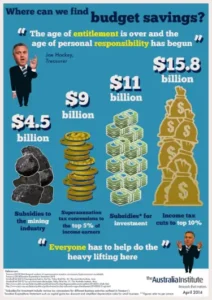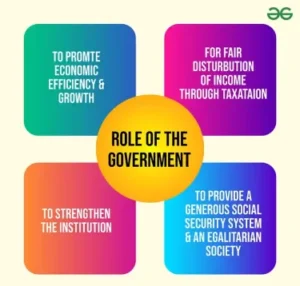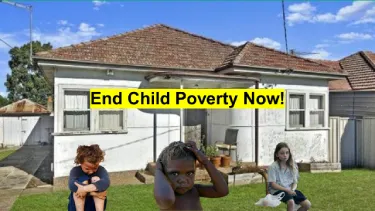Description: Child Poverty in Australia
Explore the causes and solutions to child poverty in Australia, highlighting the need for compassionate governance and better spending priorities.
Introduction
Despite Bob Hawke’s 1987 promise to end child poverty in Australia by 1990, the issue still is pervasive. This article examines the extent of child poverty, its impacts, reasons behind governmental inaction, and offers solutions. By understanding the complexity of child poverty, we can advocate for more compassionate and effective policies.
The Extent of Child Poverty in Australia
Historical Context
Bob Hawke’s Commitment

In 1987, Bob Hawke famously declared, “By 1990, no Australian child will be living in poverty.” His declaration was backed by policies aimed at social welfare reform, but many argue these measures fell short of their ambitious goal. The promise highlighted the government’s recognition of the issue but also set a high bar for later administrations.
Current Statistics
1. Prevalence: Over 774,000 children (17.7%) live below the poverty line.
2. Geographic Distribution: Rural and remote areas experience higher poverty rates compared to urban centers. These areas often lack access to essential services, including healthcare, education, and employment opportunities, exacerbating the cycle of poverty.
Remote communities face additional challenges due to isolation, leading to higher costs of living and limited access to fresh food and healthcare services.
3. Demographics: Indigenous children and those in single-parent families are disproportionately affected. Indigenous children face poverty rates nearly three times higher than non-Indigenous children.
This disparity is rooted in historical and ongoing systemic disadvantages, including limited access to quality education, healthcare, and employment opportunities.
Indigenous communities often grapple with overcrowded housing, food insecurity, and a higher prevalence of health issues, all of which contribute to the high rates of child poverty.
The Impact of Child Poverty
Effects on Children
1. Physical Health: Children in poverty are more likely to experience malnutrition, poor growth, and chronic illnesses.
2. Mental Health: Poverty contributes to stress, anxiety, and developmental delays, affecting children’s cognitive and emotional development.
3. Education: Poverty-stricken children often face barriers to education, including poor school attendance, lower academic performance, and higher dropout rates.
4. Social Implications: These children are at a higher risk of engaging in criminal activities and experiencing long-term unemployment.
Societal Impact
1. Economic Costs: Child poverty leads to long-term economic burdens, including higher healthcare and social service costs.
2. Social Cohesion: High levels of poverty can destabilize communities, increasing crime rates and reducing overall social cohesion.
3. Health System Strain: Preventable health conditions due to poverty place a significant burden on the healthcare system.
Government Inaction
Political Choices Over Necessities
1. Policy Analysis: Current policies often do not address the root causes of child poverty, focusing instead on short-term fixes.
2. Comparative Success: Countries like Norway and Denmark have significantly reduced child poverty through comprehensive social welfare programs, proving that political will can drive change.
Misallocation of Resources
Defence Spending vs. Child Welfare

1. Defence Expenditure: Australia’s commitment to spending hundreds of billions on nuclear submarines and other military assets starkly contrasts with its reluctance to adequately fund social welfare programs.
2. Perceived Utility: Many defence expenditures are viewed as unnecessary for Australia’s actual defence needs, highlighting a misalignment in spending priorities.
Government Spending Priorities
Corporate Interests vs. Public Welfare

1. Spending Patterns: Analysis shows a trend where government spending favours corporate interests and defence contracts, often influenced by lobbying from the U.S. military-industrial complex.
2. Case Studies: Instances of corporate welfare, such as tax breaks and subsidies, contrast sharply with the underfunding of essential social services.
Charities and Emotive Imagery
Use of Emotive Images
1. Fundraising Tactics: Charities often use emotive images of children in poverty to evoke emotional responses from the public and encourage donations.
2. Donation Impact: While many donations do go towards helping children, administrative costs and fundraising expenses can reduce the direct impact. It is essential to research and choose charities with high transparency and low overhead costs.
Government Responsibility
 1. Currency Sovereignty: Australia’s monetary sovereignty means it has the capacity to fund social welfare programs without relying on external donations.
1. Currency Sovereignty: Australia’s monetary sovereignty means it has the capacity to fund social welfare programs without relying on external donations.
2. Political Accountability: The use of charities to fill gaps left by government inaction highlights a failure of political will rather than economic necessity.
The Role and Funding of Charities
Why Does a Rich Country Like Australia Need Charities?

Systemic Gaps: Despite Australia’s wealth, systemic gaps in social services lead to reliance on charities. These gaps are often a result of policy decisions that prioritize other areas of spending over social welfare.
Short-term Solutions: Charities provide immediate, short-term relief to those in need, addressing urgent problems that government programs may not adequately or quickly handle.
Are Charities Doing the Work That Governments Should Provide as a Social Service?
Supplementary Role: Charities often step in to provide services that should ideally be covered by government social programs. They play a supplementary role, filling in the gaps left by insufficient government action.
Accountability and Scope: Governments have the resources and mandate to provide comprehensive social services, whereas charities are limited by funding and scope. Reliance on charities can divert attention from the need for systemic governmental solutions.
If Charities Are Genuinely Needed, Why Are They So Underfunded That They Struggle to Meet the Needs of Those Struggling?
Funding Challenges: Charities often struggle with inconsistent and limited funding, relying heavily on donations and grants, which can fluctuate significantly. This instability affects their ability to plan long-term and provide continuous support.
Competing Priorities: Public and corporate donations may prioritize more visible or immediate crises, leaving less attention and funding for ongoing issues like child poverty. Additionally, government grants to charities may be insufficient or tied to restrictive conditions.
Restrictive Conditions: Many government grants come with restrictive conditions, such as prohibitions against criticizing the government. This can limit the effectiveness of charities and restrict their ability to advocate for systemic change, thereby maintaining the status quo.
Addressing Child Poverty in Australia
Policy Recommendations
1. Comprehensive Welfare Programs: Implementing robust welfare programs that include direct financial help, access to affordable housing, and quality healthcare.
2. Education and Training: Investing in education and vocational training to ensure all children can succeed.
3. Community Support Systems: Strengthening community support networks to provide resources and support for struggling families.
Budget Reallocation
Funding Child Poverty Initiatives
1. Reallocation Strategies: Redirecting funds from less critical defence projects to social welfare programs.
2. International Examples: Learning from countries with successful child poverty reduction strategies.
Engaging Public and Policy Makers
Raising Awareness
1. Media Campaigns: Using media to highlight the issue and pressure policymakers.
2. Public Involvement: Encouraging public engagement through advocacy and community programs.
Implementing Effective Policies
1. Long-term Vision: Developing and implementing policies with a long-term vision for eradicating child poverty.
2. Government Accountability: Holding governments accountable for their spending priorities and policy outcomes.
Conclusion
Despite the promise to end child poverty in Australia, the issue persists due to political choices and misallocated resources. By re-evaluating government spending priorities and implementing comprehensive social welfare programs, Australia can move towards a more compassionate and ethical political system. Addressing child poverty is not only a moral imperative but also essential for the nation’s social and economic health.
Question for Readers
How can society ensure that child poverty becomes a priority for our government? What steps can you take to advocate for these changes?
Call to Action
Join us in advocating for policies that prioritize child welfare. Share this article, engage in discussions, and contact your local representatives to demand action.
Social Sharing
Please do share this article with your contacts and on social media to raise awareness.

